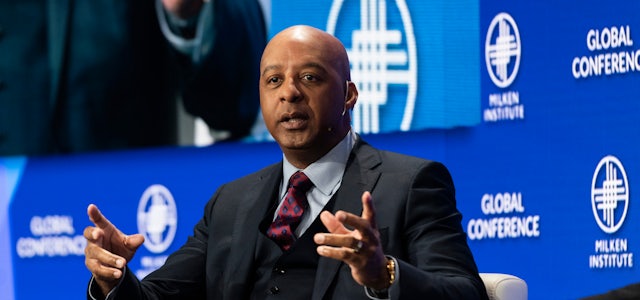
One of the big ironies in watching Elon Musk run his business empire in the fashion of The Twilight Zone’s Anthony Fremont is while it’s a demonstrable tragedy seeing the rapid demise of a firm like Twitter, it is also a highly entertaining spectacle. This is, after all, a strange era in which a weird array of business leaders has become world-famous for being bad at business. Elizabeth Holmes may have been sent to jail for the rampant fraud she committed while running the fake blood extraction machine firm Theranos, but she is also, somehow, a multiplatform entertainment industry unto herself.
And let’s face it: One day, she’s going to be handed another massive pile of money to do with what she pleases. This is the way things work when you become famous for being rich: Just this week it was reported that Billy McFarland is planning to do another Fyre Festival—and while I am gobsmacked at the idea that people will give this man money, I can’t wait to watch the documentaries.
But one of the deleterious effects of all the attention that the stars in the celebrity firmament of corporate cons and big-money malfeasance receive is it takes our eye off the ball. Beneath this straight-to-streaming-series layer of camera-ready scammers, there is a more substantial plunder going on in executive suites all across the country. Fortunately, we have the Institute for Policy Studies keeping watch over executive excess. And their 2023 report on what they term the “Low-Wage 100”—the 100 firms listed on the S&P 500 Index that had the lowest median worker pay levels in 2022—casts a riveting light on some real highway robbery.
Among the companies in the Low-Wage 100, the gap between average workers and the executives who govern their lives continues to be grotesquely wide. When one of the few good things you can say about the CEO-worker pay gap at these firms is that it dropped from a staggering 670-to-1 to a slightly less stratospheric 603-to-1, you are still facing a thoroughly baked-in state of affairs.
This time last year, we talked about how stock buybacks—which the Harvard Business Review assailed as an exemplar of “bad management” because the practice neither creates capital for reinvestment nor rewards a workforce for its hard work—had become the “one neat trick” by which the executives at these firms feathered their own nests while leaving their workers wanting. As the IPS reports, 90 of the Low-Wage 100 reported “combined stock buyback expenditures of $341.2 billion” between January 1, 2020, and May 31, 2023.
Lowe’s, which has become something of a bête noire on the IPS’s annual report, topped all-comers with respect to stock buybacks. According to the IPS, in 2022, the company spent “more than $14.1 billion on buybacks—enough to give every one of its 301,000 U.S. employees a $46,923 bonus.” Collectively, stock buybacks have allowed the CEOs of the Low-Wage 100 to cart off quite a pile of boodle—the IPS estimated that these executives’ “personal stock holdings increased more than three times as fast as their firms’ median worker pay.”
But perhaps one of the most galling things about these corporations is how many of them are using our taxpayer dollars to add to these CEOs’ kitties. According to the IPS, 51 of the Low-Wage 100 “received federal contracts worth a combined $24.1 billion during fiscal years 2020–2023.” Additionally, “The average CEO pay in this low-wage contractor group stood at $12.7 million, 56 times as much as the salary of a Biden administration cabinet secretary” and “438 times their $34,550 median worker pay.” The firm that stands out among those fattening themselves off the taxpayer teat is Amazon, which has taken in nearly $10.4 billion in federal contracts, according to the IPS. As The New Republic contributor Sandeep Vaheesan recently reported, Amazon’s broad universe of contract work is one factor that makes it hard for antitrust regulators to bring the firm to heel.
The recently passed Inflation Reduction Act included measures to contend with the escalating problem of corporate malfeasance, most notably through a long-overdue 1 percent excise tax on stock buybacks. But according to The Wall Street Journal, “Executives largely shrugged off” the IRA’s impositions “as the cost of doing business.” It’s probably no surprise, then, that President Joe Biden wants to take a bigger bite: He’s proposed raising that excise tax to 4 percent—the better to goose “long-term investments by companies instead of rewarding shareholders and executives.”
Sarah Anderson, the director of the IPS Global Economy Project and author of this year’s report, encouraged lawmakers to keep pushing the envelope to narrow these gaping corporate inequalities. That includes executive action. “President Biden should wield the power of the public purse to push all corporate recipients of taxpayer money to narrow their pay gaps, stop wasting money on buybacks, and respect worker rights,” says Anderson.
There’s a line from Michael Mann’s movie Thief that feels apt: “I can see my money is still in your pocket, which is from the yield of my labor.” It’s worth remembering that CEOs across multiple industries have been raking it in even as they have seeded the business-friendly press with phantasmal recession fears and mass layoffs have become the norm. The New Republic contributor Boen Wang, who’s watched enthusiastic coverage of a podcasting boom even as massive job losses hit that industry, is keen to observe that the proceeds of that boom have to go somewhere—most likely, to corporate executives who haven’t earned it. Perhaps, as Wang suggests, it’s time for CEOs to return the money in their pockets to people to whom it truly belongs.
This article first appeared in Power Mad, a weekly TNR newsletter authored by deputy editor Jason Linkins. Sign up here.